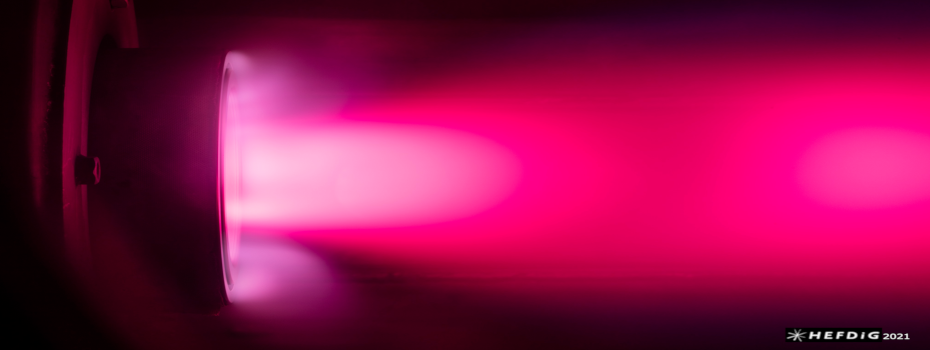Speaker
Description
An overview of the Dragonfly aerothermal environments and simulations performed will be presented. Titan’s atmosphere predominantly consists of nitrogen (~98% by mole) with small amounts of methane (~2% by mole) and other trace gases. CN is a strong radiator and is found in nonequilibrium concentrations for Titan entry, and is of particular importance on the backshell, where radiation dominates the heat flux.
The presentation will discuss the simulation methodology and assumptions, as well as the margin process in determining the aerothermal environments for Dragonfly’s entry at Titan. A relatively new methodology, known as shock tube informed bias, based on experiments performed in the NASA Ames shock tube, EAST, are used for assessing design margins for Dragonfly’s radiative heating. Open questions regarding reconstruction of the Dragonfly entry, such as understanding the free-stream methane abundance will be discussed.
NASA Ames and Langley are partnering with DLR to propose a comprehensive instrumentation suite known as the Dragonfly Entry Aerosciences Measurements (DrEAM). Dragonfly will be the first competed mission to fly EDL instrumentation as part of NASA’s Engineering Science Investigation (ESI). DrEAM will provide key aerothermodynamic data and performance analysis for Dragonfly’s forebody and back-shell Thermal Protection System (TPS), and includes a DLR-provided Data Acquisition System (DAS).
The accurate modeling of nonequilibrium CN radiation has proven to be a difficult task. Prompted by the Huygens mis-sion, many experimental campaigns and analyses were per-formed to better understand the aerothermal environments experienced by the probe during Titan entry [1]. However, the Huygens probe carried no heatshield instrumentation. There-fore, the DrEAM instrumentation suite will significantly ad-vance the state-of-the-art not only by documenting the environment and performance of Dragonfly’s entry system but also by making key measurements in Titan’s atmosphere for the first time.
Aerodynamic and aerothermal environments and TPS response will be measured using sensors similar to the Mars Entry, Descent, and Landing Instrumentation 2 (MEDLI2) Instrumented Sensor Plug (MISP) and the COMbined Aero-thermal and Radiometer Sensor (COMARS) suite [2], with the latter supplied by DLR. For MEDLI2, MISP used em-bedded thermocouples (TCs) to directly measure in-depth temperature of the TPS at several locations, which can also be used to infer surface environments via inverse analysis. For DrEAM, the MISP style plugs will be known as Dragonfly Sensors for Aero-Thermal Reconstruction (DragSTR) plugs. Atmospheric density measurements and capsule aerodynamic data will be obtained through the onboard Inertial Measurement Unit (IMU), supplemented by hypersonic pressure transducers similar to those used by the MEDLI Mars Entry Atmospheric Data System (MEADS). The DrEAM pressure sensors will be known as Dragonfly Atmospheric Flight Transducers (DrAFT) On Schiaparelli, the COMARS suite included three total surface-mounted heat flux sensors, three pressure sensors, and one radiometer. For DrEAM, the COMARS package will be known as COmbined Sensor System for Titan Atmosphere (COSSTA).
References:
1. M. Wright et al. “A Code Calibration Study for Huygens Entry Aero-heating,” AIAA 2006.
2. A. Gülhan. et al. “Aerothermal Measurements from the ExoMars Schiaparelli Capsule Entry,” Journal of Spacecraft and Rockets, 2018.
Summary
Provide an overview of the aerothermal environments used in the Dragonfly design and the entry instrumentation known as, Dragonfly Entry Aerosciences Measurements (DrEAM).

